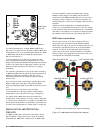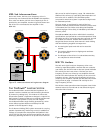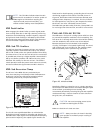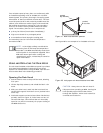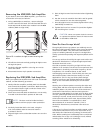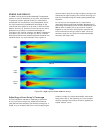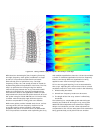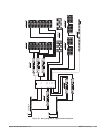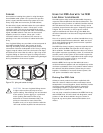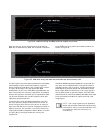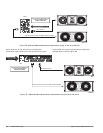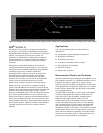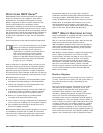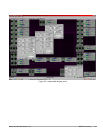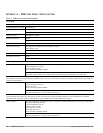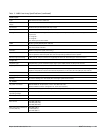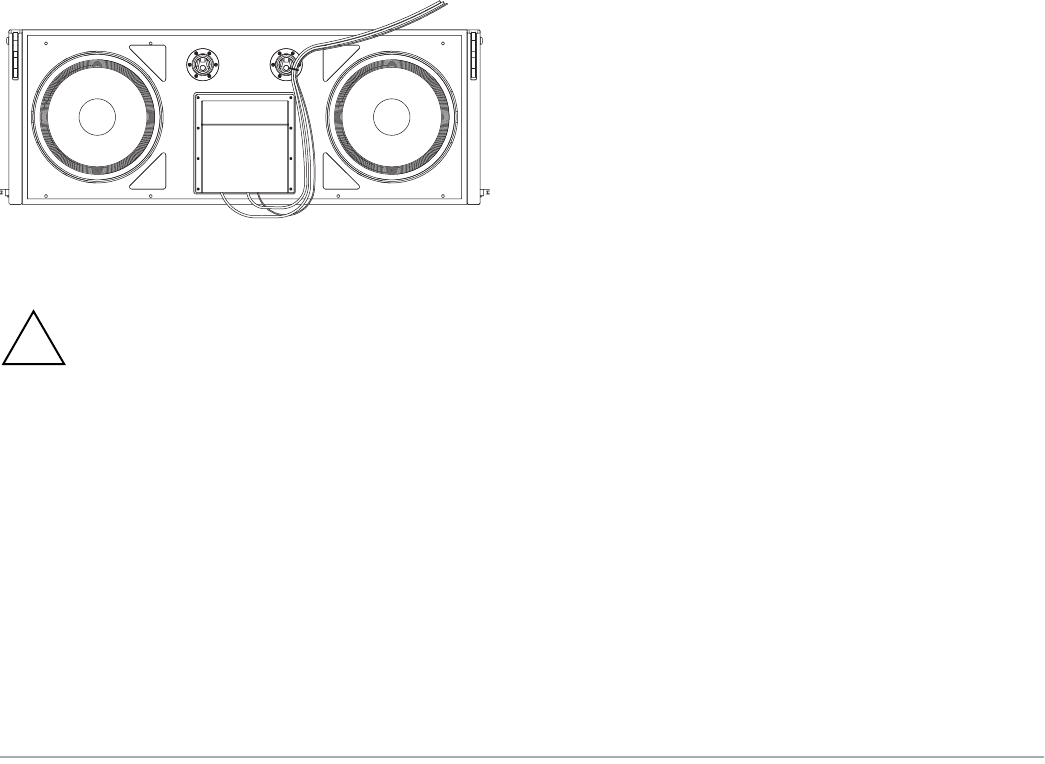
14
•
M3D
™
Line Array Meyer Sound Laboratories Inc
CABLING
One method of cabling the system is using the Meyer
Sound/VEAM cable system. This system incorporates
power, signal, and RMS monitoring system all in one
heavy-duty cable and connector per M3D cabinet.
The electrical, signal, and RMS cables for each cabinet
can be consolidated to create a “three-pair” multi-
conductor cable. This can be accomplished by using
separate electrical and signal XLR cable. The electrical,
signal, and RMS cable for each box can be loomed
together per box to create a “three-pair” multi-
conductor cable for each cabinet. This ensures no
patching errors and a minimum of cables behind the
array.
Two ring/stud fittings are provided on the back panel of
each M3D and M3D-Sub for the purpose of strain
relieving all cabling. Insert the signal, data, and AC
connections into each loudspeaker as the array is being
rigged, swag all cables under the rain hood’s side flaps,
and tie them off onto either the left or right rings of the
ring/stud fitting as shown in Figure 23. Using the strain
reliefs will minimize the chance of cables being damaged
during installation of the sound system.
USING THE M3D-SUB WITH THE M3D
LINE ARRAY LOUDSPEAKER
The M3D system will provide full bandwidth frequency
response without M3D-Sub directional subwoofers. The
height of the array (number of cabinets) and the desired
SPL will determine how much sub-bass energy can be
provided, proportional to the upper-frequency spectrum.
If higher SPL is necessary or the program content
requires additional sub-bass energy, then M3D-Sub
direction subwoofers can be used to augment the M3D
line arrays.
There is no polarity switch on either the M3D Line Array
or the M3D-Sub directional subwoofer. Both are wired
pin 2 “hot” (positive acoustic pressure when a positive
pulse is applied to pin 2).
The M3D Line Array frequency response operates down
to 35 Hz, while the M3D-Sub operates in the range of
30 Hz to 80 Hz. The M3D-Sub therefore does not extend
the system response appreciably; rather, it increases the
acoustic power of the system in the lowest frequencies.
This can be very useful in applications that require large
amounts of low-frequency energy, such as the
reinforcement of popular music.
Both the M3D Line Array and the M3D-Sub have a
cardioid directional pattern and are designed to provide
maximum cancellation from six to twelve meters behind
the cabinet (-20 dB at 8 meters). When they are used
together, in addition to increased forward power, the
rear power cancellation also improves.
Driving the M3D-Sub
All Meyer Sound products have been optimized with
internal crossover networks. When most Meyer Sound
loudspeakers are used together, these networks provide
maximum power addition through their respective
overlapping frequency ranges when used in close
proximity and co-planar to one another.
You may loop connections between the M3D Line Array
and the M3D-Sub. This will result in 6 dB greater sound
pressure in the 40 Hz to 100 Hz range, as shown in
Figure 24, a ground-plane measurement taken at six
meters.
Figure 23. Tying off cables to rings.
!
CAUTION: The rear ring/stud fittings shown
in Figure 23 must be used only to secure
system cabling. These fittings are not intended
to be used for system rigging or a pull-back
motor (pulling the bottom of the array
backward to increase downward tilt). The
points are mounted on each side of the
amplifier area, so as not to interfere with the
rain hood and the amplifier fan exhaust area.



